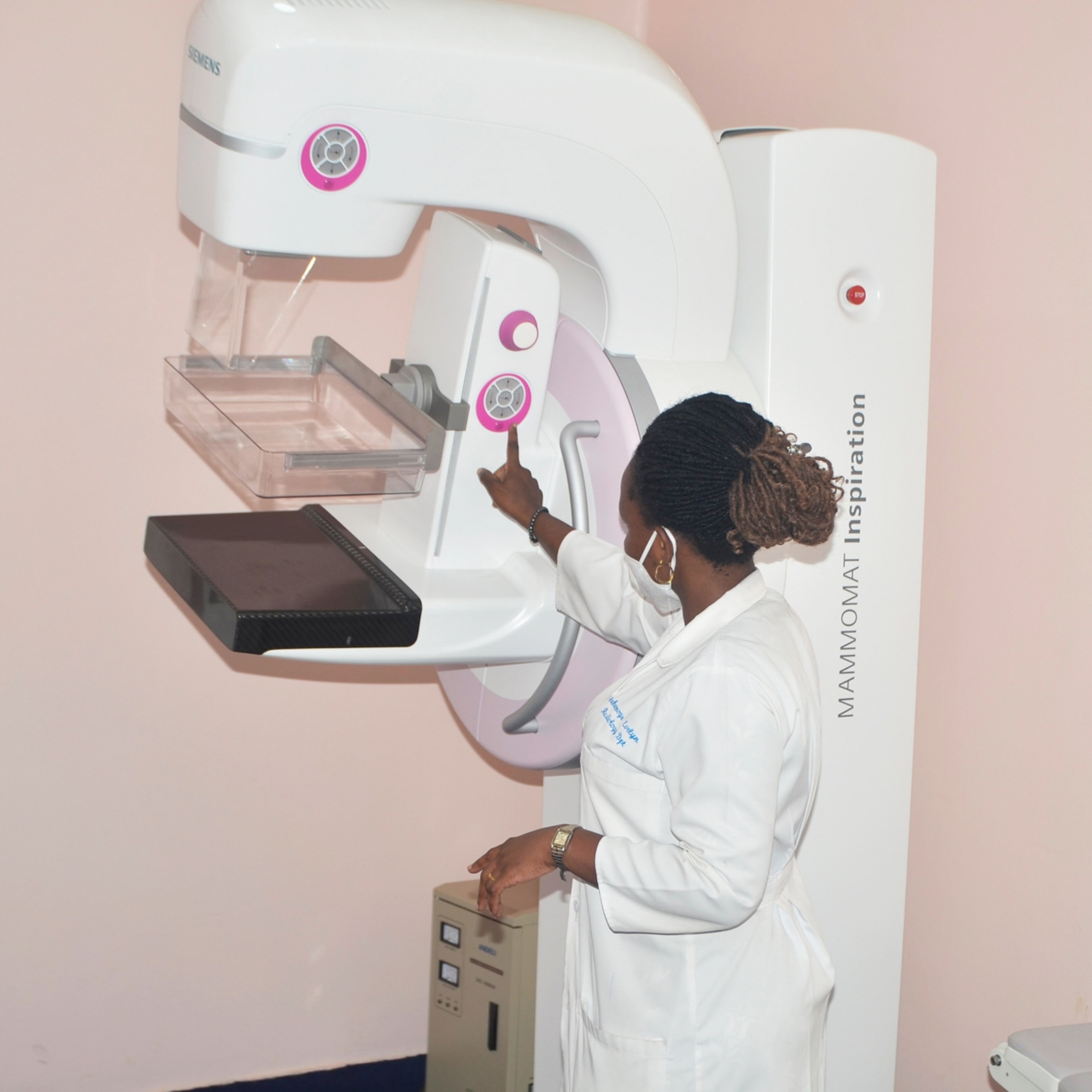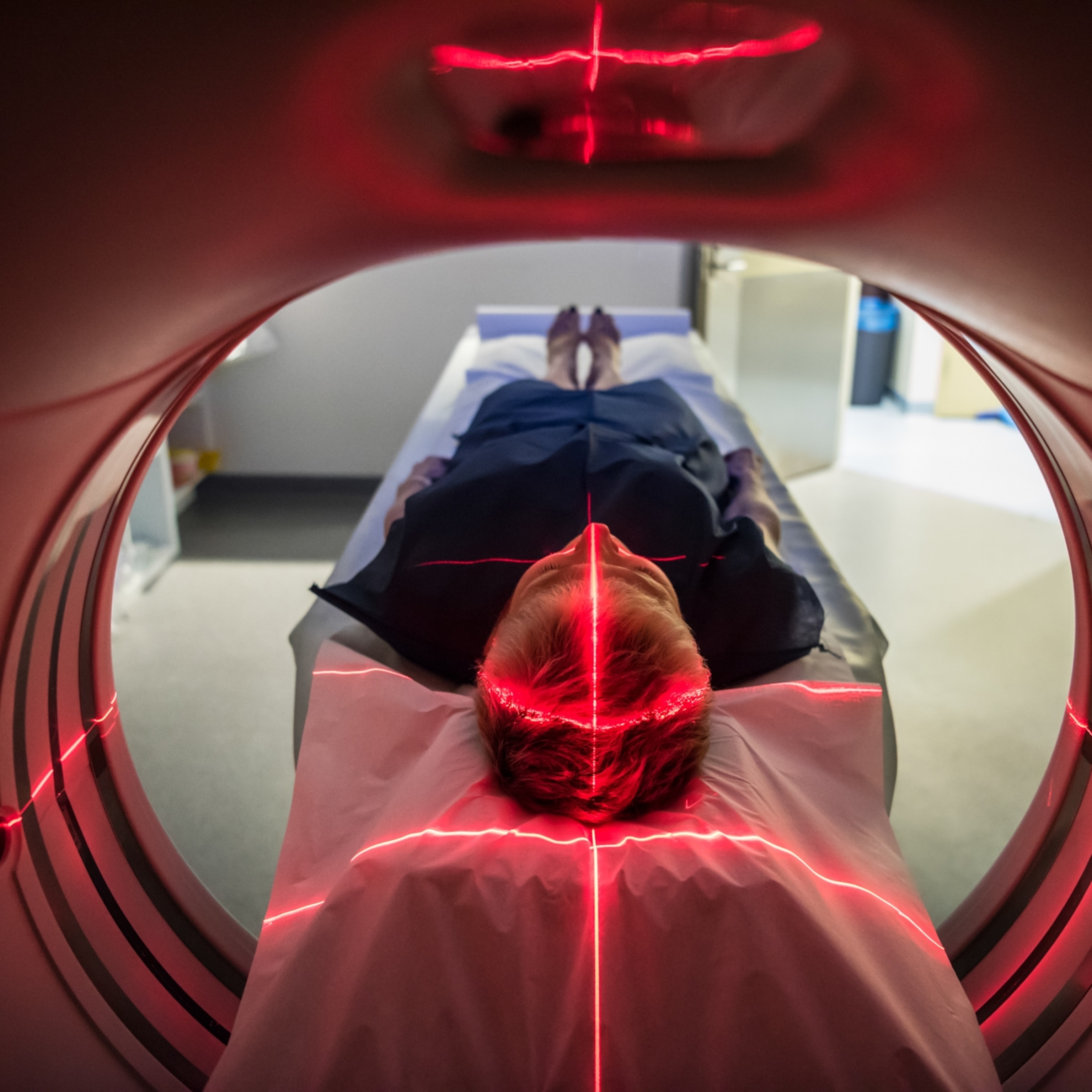World’s brightest x-rays reveal COVID-19’s damage to the body
A new scanning technique delivers exquisitely detailed images—and could revolutionize the study of human anatomy.
When Paul Tafforeau saw his first experimental scans of a COVID-19 victim’s lung, he thought he had failed. A paleontologist by training, Tafforeau had been laboring with a team strewn across Europe for months to turn a particle accelerator in the French Alps into a revolutionary medical scanning tool.
It was the end of May 2020, and scientists were anxious for a better view of the ways human organs were being ravaged by COVID-19. Tafforeau had been tasked with developing a technique that could make use of the powerful x-rays generated at the European Synchrotron Radiation Facility (ESRF) in Grenoble, France. He’d pushed boundaries on high-resolution x-rays of rock-hard fossils and desiccated mummies as an ESRF staff scientist. Now, he was dismayed by a lump of soft, squishy tissue.
(Hottest Thing on Earth: X-Rays Heat Metal to 3.6 Million Degrees)
But when his colleagues caught their first glimpse of the lung scans, they felt something else: awe.


The images presented them with richer detail than any medical CT scan they’d seen before, allowing them to bridge a stubborn gap in how scientists and doctors can visualize—and make sense of—human organs. “In anatomy textbooks, when you see, This is the large scale, and this is the smaller one, they’re all beautiful hand-drawn images for a reason: They’re artistic interpretations, because we have no images for it,” says Claire Walsh, a senior postdoctoral fellow at University College London (UCL). “For the first time, we can make the real thing.”
Tafforeau and Walsh are part of an international team of more than 30 researchers that has created a powerful new kind of x-ray scan called hierarchical phase-contrast tomography (HiP-CT). With it, they can finally go from a complete human organ to a zoomed-in view of the body’s tiniest blood vessels and even individual cells.
The technique is already providing fresh insights into how COVID-19 damages and reshapes the blood vessels of the lungs. And while its long-term promise is hard to define, because nothing quite like HiP-CT has ever existed before, researchers excited by its potential are enthusiastically dreaming up new ways to understand disease and more rigorously chart the terrains of human anatomy.
“What is perhaps a surprise to most people is we’ve been studying the heart anatomically since hundreds of years ago,” says UCL cardiac anatomist Andrew Cook, “but there isn’t a consensus about the normal structure of the heart, particularly the muscle cells, and how it changes as the heart beats.”
A technique with HiP-CT’s promise, he says, is something “I’ve been waiting for my whole career.”


Needing a bigger magnifying glass
The HiP-CT technique got its start as two German pathologists raced to track the SARS-CoV-2 virus’s punishing effects across the human body.
As soon as news of unusual pneumonia cases began trickling out of China, Danny Jonigk—a thoracic diseases pathologist at Hannover Medical School—and Maximilian Ackermann, a pathologist at University Medical Center Mainz, were on high alert. Both had expertise in lung disease, and right away they knew COVID-19 was unusual. The two were especially concerned about reports of a “silent hypoxia” that left COVID-19 patients awake but caused their blood oxygen levels to plummet.
Ackermann and Jonigk suspected that SARS-CoV-2 was somehow attacking the lungs’ blood vessels. As the disease spread through Germany in March 2020, the duo began conducting autopsies of COVID-19 victims. They soon tested their blood-vessel hypothesis by injecting tissue samples with resin and then dissolving the tissues in acid, which left behind faithful casts of the original vasculature.
Using this technique, Ackermann and Jonigk compared the tissues of people who hadn’t died of COVID-19 with those who had. They immediately saw that among COVID-19 victims, the smallest blood vessels in the lungs were distorted and reshaped. These landmark results, published online in May 2020, showed that COVID-19 wasn’t strictly a respiratory disease but a vascular one—one that could affect organs across the entire body.
“If you go through the human body and you take all the blood vessels in one line, you come up with [60,000] to 70,000 miles, double the distance around the Equator,” says Ackermann, who is also a pathologist at Wuppertal, Germany’s HELIO Clinics. If just one percent of these blood vessels gets attacked by a virus, he adds, the blood’s flow and ability to absorb oxygen can be impaired, with potentially devastating consequences across entire organs.
As soon as they recognized COVID-19’s vascular effects, Jonigk and Ackermann realized that they needed a much better view of the damage.
Medical x-rays such as CT scans can provide a view of an entire organ, but they weren’t high-resolution enough. Biopsies can let scientists study tissue samples under a microscope, but the resulting images are only small bits of a whole organ and can’t show how COVID-19 progresses across an entire lung. And the team’s resin technique required dissolving tissue, which destroys the sample and limits further study.
“At the end of the day, [the] lung is oxygen in, carbon dioxide out—but for that, it has thousands and thousands of miles of blood vessels and capillaries that are so finely and nicely arranged … it’s almost a miracle,” says Jonigk, the founding principal investigator of the German Center of Lung Research. “So how could we actually assess something as complex as COVID-19 … without destroying the organ?”
Jonigk and Ackermann needed the unprecedented: a series of x-rays, all done on the same organ, that would let researchers zoom into portions of the organ down to the cellular scale. In March 2020, the German duo reached out to a longtime collaborator of theirs, Peter Lee, a materials scientist and chair of emerging technologies at UCL. Lee‘s specialty is studying biological materials with powerful x-rays—so his mind immediately went to the French Alps.

Getting the scans to work
The European Synchrotron Radiation Facility sits in the northwestern corner of Grenoble on a triangular plot of land where two rivers meet. The facility is a particle accelerator that makes electrons travel at nearly the speed of light around a half-mile-long circular track. As these electrons careen round and round, powerful magnets along the track bend the particle stream, which causes the electrons to emit the world’s brightest x-rays.
This powerful radiation lets the ESRF peer into objects at the scale of micrometers, even nanometers. It is frequently used to study materials such as alloys and composites, check the molecular structures of proteins, and even reconstruct ancient fossils without having to separate rock from bone. Ackermann, Jonigk, and Lee wanted to use this huge instrument to perform the world’s most detailed x-ray scans of a human organ.
Enter Tafforeau, whose work at the ESRF has stretched the limits of what synchrotron scans can see. His impressive bag of tricks previously let scientists peer inside dinosaur eggs and virtually unwrap mummies, and almost immediately, Tafforeau confirmed that the synchrotron could, in theory, make a good scan of an entire lung lobe. But actually scanning a whole human organ posed a grand challenge.
For one, there’s the issue of contrast. Standard x-rays make images based on how much radiation gets absorbed by different materials, with heavier elements absorbing more than lighter ones. Soft tissues are mostly made of light elements—carbon, hydrogen, oxygen, and so on—which is why they don’t show up clearly in a classic medical x-ray.
One of the ESRF’s great benefits is that its x-ray beams are very coherent: Light moves in waves, and in the ESRF’s case, its x-rays all start out with the same frequency and alignment, undulating in unison like the marks left behind by a zen garden’s rake. But as these x-rays move through an object, subtle differences in density can cause each x-ray’s path to deviate slightly, a difference that gets more detectable the farther the x-rays propagate once they exit the object. These deviations can reveal the slight density differences within an object, even if it is made of light elements.
But stability is another challenge. To pull off a series of zoomed-in x-rays, a given organ would have to be immobilized in its natural shape so it wouldn’t flex and shift by more than a thousandth of a millimeter. Any more wiggle than that, and successive x-ray scans on the same organ wouldn’t align with each other. Needless to say, though, organs can be quite floppy.
Lee and his team at UCL rushed to devise containers that could withstand the synchrotron’s x-rays but also let through as many waves as possible. Lee also juggled the project’s overall organization—such as the finer points of shipping human organs between Germany and France—and recruited Walsh, who specializes in huge biomedical datasets, to help work out how to analyze the scans. Back in France, Tafforeau’s jobs included refining the scanning procedure and figuring out how to keep the organs still within the containers that Lee’s team was building.


To preserve the organs from decay and make the scans as sharp as possible, Tafforeau knew that they would need to be treated with several rounds of ethanol-water solutions. He also knew that he needed to stabilize the organs in something that exactly matched the organs’ density. His working plan was to somehow embed the organs in an ethanol-rich agar, a jelly-like substance derived from seaweed.
However, the devil would be in the details—and Tafforeau, like much of Europe, was stuck at home in lockdown. So Tafforeau relocated his research to his home laboratory: a former secondary kitchen that he had spent years decking out with 3D printers, basic chemistry equipment, and the tools used to prepare animal skeletons for anatomical study.
Tafforeau used supplies from a local grocery store to work out how to make his agar. He even collected rainwater runoff from his recently cleaned roof to obtain demineralized water, a standard ingredient in lab-grade agar recipes. To practice packing organs in agar, he got pig entrails from a local slaughterhouse.
Tafforeau got permission to return to the ESRF in mid-May to perform the first test scans of a pig’s lung. As May turned to June, he had prepared and scanned the left lung lobe of a 54-year-old man who had died from COVID-19, which Ackermann and Jonigk had shipped to Grenoble from Germany.
“When I saw the first image, the email I sent to all the people on the project was, I apologize: We failed, I was not able to have high-quality scans,” he says. “I just sent them two pictures that, for me, were bad, but for them were excellent.”
For UCL’s Lee, the images were awe-inspiring: an organ-wide view like a standard medical CT scan, but “with one million times the information.” It was as if the researchers had spent their lives studying a forest by either flying over it in a jumbo jet or hiking along one trail. Now they were soaring just above the forest canopy, like birds on the wing.
“The first time we saw the middle resolution … It was just like, silence,” Walsh says.
Tackling future challenges
The team published its first full description of the HiP-CT method in November 2021, and the researchers also have published a detailed look at how COVID-19 affects certain kinds of blood circulation in the lungs.
The scans also yielded an unanticipated bonus: helping the researchers convince friends and relatives to get vaccinated. In severe COVID-19 cases, many of the lungs’ blood vessels look dilated and bloated, and at smaller scales, abnormal bundles of tiny blood vessels form.
“When you see the structure of lungs of people who die from COVID, it does not look like lungs—it’s a big mess,” Tafforeau says.
Even in healthy organs, he adds, the scans were revealing subtle anatomical features that had never been documented because nobody has ever seen a human organ in this level of detail before. With more than a million dollars in funding from the Chan Zuckerberg Initiative—a nonprofit founded by Facebook CEO Mark Zuckerberg and physician Priscilla Chan, Zuckerberg’s wife—the HiP-CT team is now creating what it’s calling the Human Organ Atlas.
So far, the group has released scans of five types of organs—the heart, brain, kidneys, lungs, and spleen—based on donated organs from Ackermann and Jonigk’s COVID-19 autopsies in Germany and healthy “control” organs from LADAF, a Grenoble-based anatomy lab. The team has made the data, as well as fly-through movies based on the data, freely available online.
The Human Organ Atlas is rapidly growing: Another 30 organs have already been scanned, and 80 more are in various stages of preparation. Lee says that some 40 different research groups have contacted the team to learn more about the method.


Cook, the UCL heart specialist, see enormous potential in using HiP-CT to understand basic anatomy. And Joe Jacob, a UCL radiologist who specializes in lung disease, says that HiP-CT will be “invaluable for understanding diseases,” especially in 3D structures such as blood vessels.
Even artists are joining the fray. Barney Steel, of the London-based experiential art collective Marshmallow Laser Feast, says that he is actively researching how to explore HiP-CT data in immersive virtual reality. “We’re basically creating journeys through the human body,” he says.
But for all HiP-CT’s promise, there are also considerable challenges. First, Walsh says, HiP-CT scans generate a “terrifying amount of data,” easily several terabytes per organ. For clinicians to make real-world use of these scans, the researchers hope to develop a cloud-based interface to navigate them, like Google Maps for the human body.
They also need to turn the scans into workable 3D models with greater ease. Like all CT scanning techniques, HiP-CT works by making many 2D slices of a given object and stacking them together. Even today, much of this process is manual, especially for scans of abnormal or diseased tissues. Lee and Walsh say that a major priority for the HiP-CT team is to develop machine-learning techniques that can lighten the load.
These challenges will scale as the Human Organ Atlas expands—and as researchers’ ambitions grow with it. The HiP-CT team is using the ESRF’s newest beam facility, called BM18, to continue scanning the project’s organs. BM18 produces a much bigger x-ray beam, which means scans take less time, and BM18’s x-ray detector can be placed up to 125 feet (38 meters) away from the object being scanned, which makes its scans far sharper. The BM18 results are already so good, Tafforeau says, that he has re-scanned some of the the Human Organ Atlas’s original samples on the new system.
BM18 also has the space to scan very large objects. Thanks to the new facility, the team’s vision is to scan an entire torso of a human body in one fell swoop by the end of 2023.
In exploring this technique’s immense potential, Tafforeau says, “we are really at the very beginning.”








